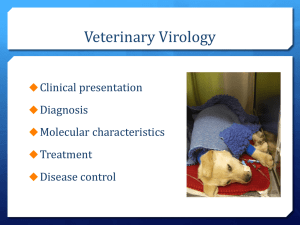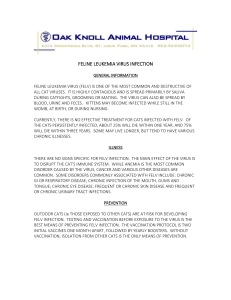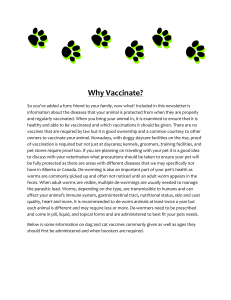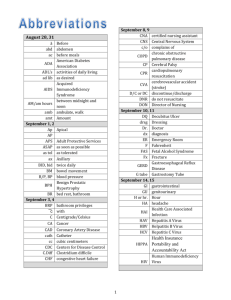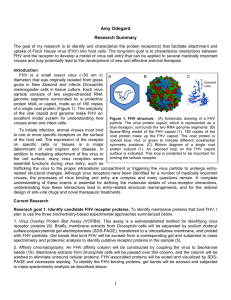Feline Herpes Virus - Pittsburgh Veterinary Specialty & Emergency
advertisement
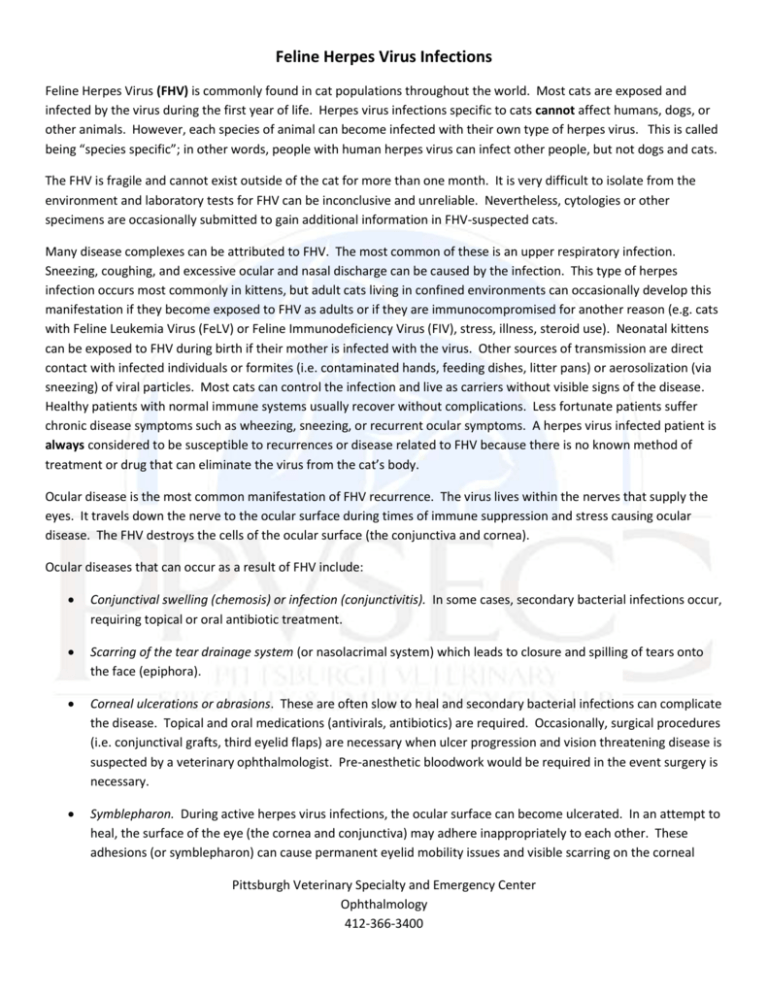
Feline Herpes Virus Infections Feline Herpes Virus (FHV) is commonly found in cat populations throughout the world. Most cats are exposed and infected by the virus during the first year of life. Herpes virus infections specific to cats cannot affect humans, dogs, or other animals. However, each species of animal can become infected with their own type of herpes virus. This is called being “species specific”; in other words, people with human herpes virus can infect other people, but not dogs and cats. The FHV is fragile and cannot exist outside of the cat for more than one month. It is very difficult to isolate from the environment and laboratory tests for FHV can be inconclusive and unreliable. Nevertheless, cytologies or other specimens are occasionally submitted to gain additional information in FHV-suspected cats. Many disease complexes can be attributed to FHV. The most common of these is an upper respiratory infection. Sneezing, coughing, and excessive ocular and nasal discharge can be caused by the infection. This type of herpes infection occurs most commonly in kittens, but adult cats living in confined environments can occasionally develop this manifestation if they become exposed to FHV as adults or if they are immunocompromised for another reason (e.g. cats with Feline Leukemia Virus (FeLV) or Feline Immunodeficiency Virus (FIV), stress, illness, steroid use). Neonatal kittens can be exposed to FHV during birth if their mother is infected with the virus. Other sources of transmission are direct contact with infected individuals or formites (i.e. contaminated hands, feeding dishes, litter pans) or aerosolization (via sneezing) of viral particles. Most cats can control the infection and live as carriers without visible signs of the disease. Healthy patients with normal immune systems usually recover without complications. Less fortunate patients suffer chronic disease symptoms such as wheezing, sneezing, or recurrent ocular symptoms. A herpes virus infected patient is always considered to be susceptible to recurrences or disease related to FHV because there is no known method of treatment or drug that can eliminate the virus from the cat’s body. Ocular disease is the most common manifestation of FHV recurrence. The virus lives within the nerves that supply the eyes. It travels down the nerve to the ocular surface during times of immune suppression and stress causing ocular disease. The FHV destroys the cells of the ocular surface (the conjunctiva and cornea). Ocular diseases that can occur as a result of FHV include: Conjunctival swelling (chemosis) or infection (conjunctivitis). In some cases, secondary bacterial infections occur, requiring topical or oral antibiotic treatment. Scarring of the tear drainage system (or nasolacrimal system) which leads to closure and spilling of tears onto the face (epiphora). Corneal ulcerations or abrasions. These are often slow to heal and secondary bacterial infections can complicate the disease. Topical and oral medications (antivirals, antibiotics) are required. Occasionally, surgical procedures (i.e. conjunctival grafts, third eyelid flaps) are necessary when ulcer progression and vision threatening disease is suspected by a veterinary ophthalmologist. Pre-anesthetic bloodwork would be required in the event surgery is necessary. Symblepharon. During active herpes virus infections, the ocular surface can become ulcerated. In an attempt to heal, the surface of the eye (the cornea and conjunctiva) may adhere inappropriately to each other. These adhesions (or symblepharon) can cause permanent eyelid mobility issues and visible scarring on the corneal Pittsburgh Veterinary Specialty and Emergency Center Ophthalmology 412-366-3400 surface, which can lead to visual deficits. Adhesions or scarring of the tear drainage system can occur in conjunction with sympblepharon. Dry eye or tear quality abnormalities. In cases of severe and/or chronic conjunctivitis, destruction of the gland responsible for tear production or cells that contribute to tear film quality can occur. Low/poor tear production can lead to discomfort, discharge, and predisposition to corneal ulceration and scarring. Lifelong medications may be required to improve comfort and ocular surface quality. Corneal sequestrum. This unique complication results when the inner layers of the cornea have been destroyed by FHV infection or its immune reaction. The “dead” tissue is trapped or “sequestered” between the living layers. The dead tissue stimulates local inflammation, which usually progresses to cause an ulceration of the cornea. Sequestrums have a characteristic brown discoloration. Most sequestrum affected patients will suffer unless the dead tissue is removed by a surgical procedure (superficial keratectomy and third eyelid flap) performed by the ophthalmologist. Pre-anesthetic blood work may be necessary in older or unhealthy patients. Fortunately, recurrences are rare, but do occur in individuals with poorly responding immune systems. The corneal sequestrum occurs more commonly in certain breeds (e.g. Persians, Himalayans, Siamese, and Burmese), and includes cats with more prominent eyes. The reason for a higher rate of occurrence is not known, but is thought to be a breed predisposition or a consequence of poor blinking mechanics, increased surface exposure, and chronic irritation from small hairs along the eyelid margin. Eosinophilic keratitis. This characterized by accumulations of a certain type of white blood cell found in the blood, called the eosinophil. The affected site usually becomes elevated, irregular, and has a white granular texture. Secondary bacterial infections and corneal ulcerations are commonly associated with the abnormal tissue. Most affected eyes will respond to medical treatment (i.e. topical and/or oral corticosteroids), but recurrence are common. Most cats can be controlled on low-dose maintenance eye drops once the keratitis has resolved. Treatment The specific treatment for FHV is dependent upon the clinical signs exhibited by the patient. Topical antivirals are required in a large portion of cases during active flare ups of the disease. Topical (+/- oral) antibiotics are often indicated when a bacterial infection occurs as a secondary consequence to the underlying viral infection. L-Lysine has become a mainstay of therapy for FHV affected cats. L-Lysine is an amino acid supplement that minimizes the FHV’s ability to replicate, decreasing the severity of the clinical signs associated with the viral infection. This oral supplement can not only be used during active infections but can be administered as a maintenance treatment to cats to try and prevent or minimize the severity of flare ups in the future. Other treatments are often specific to the diagnosis made by the veterinary ophthalmologist. Many of the conditions listed above that are associated with FHV look very similar but often require much different treatment regimes, making it important to follow up regularly with your veterinary ophthalmologist. Pittsburgh Veterinary Specialty and Emergency Center Ophthalmology 412-366-3400

